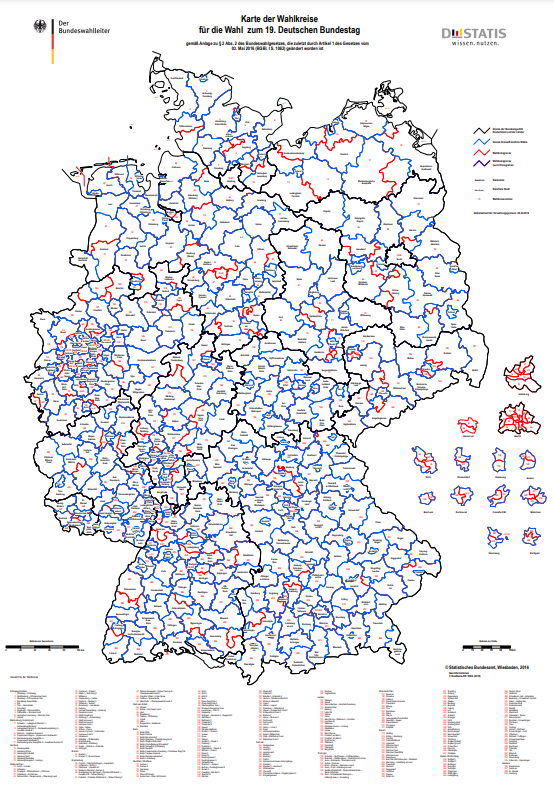As part of our coverage of the upcoming German elections, in partnership with Europe Elects, we will be running a series of posts to help our audience understand the German electoral system and the state of the race.
In this installment, Tobias Gerhard Schminke, founder of Europe Elects explains the German election system and what results we’ll be seeing on Sunday, September 26th.
Germany 2021: An Election And Results Primer
By Tobias Gerhard Schminke
After discussing the most important political parties and post-election government coalition options in our first article, let us look at the electoral system for the 26 September national parliamentary election in Germany.
Voting takes place between 8 AM and 6 PM on election day, but mail-in voting has been possible for several weeks in advance. Germans have two votes: the ‘first vote’ (Erststimme) and the ‘second vote’ (Zweitstimme).

The first vote operates according to the majoritarian, first-past-the-post system: voters can pick one candidate to represent their constituency. The candidate that receives the most votes within that constituency enters the national parliament. INSA projected on 6 September that the centre-left SPD (S&D Group in the EU Parliament) is set to win 198 constituencies and 26% of the vote, the centre-right CSU (EPP Group in the EU Parliament) is set to win 37 constituencies and 5% of the vote, the centre-right CDU (EPP Group in the EU Parliament) is set to win 37 constituencies and 15% of the vote, the right-wing AfD (ID Group in the EU Parliament) is set to win 13 constituencies and 11% of the vote, the environmentalist GRÜNE (Greens/EFA Group in the EU Parliament) is set to win 11 constituencies and 15.5% of the vote, and the democratic socialist LINKE (Left in the EU Parliament) is set to win three constituencies and 6.5% of the vote.
The majoritarian electoral system tends to be quite disproportional. For example, as per the above, 26% of the vote brings SPD 66% of the seats. To counteract this imbalance, Germans can use their second vote to determine the national seat share for each party in parliament. The general idea is that equalizing seats for all parties that receive either at least three first-vote-seats or five percent of the second votes (“Sperr- beziehungsweise Grundmandatsklausel”) is applied. Hence, winning the third first vote seat might become relevant for LINKE if they fail to enter the five-percent threshold. The vote share of parties that do not meet the five percent threshold is equally distributed across the parties mentioned above. INSA projects that SPD will end up with 227 seats, CDU/CSU will receive 182 seats, GRÜNE with 135 seats, FDP with 109 seats, AfD with 96 seats, and LINKE with 57 seats. Because of this adjustment of the 598-seat baseline, in an attempt to reach proportional representation and constituency-representation simultaneously, INSA projects that the parliament will have more than 800 members in total, which would make it – once again – the democratic lower house with the most seats in the world.
SSW is the party of the Danish minority. It only contests in the Northern region of Schleswig-Holstein. As a formally recognized minority party, they only need to overcome the mathematical threshold to enter parliament, which eventually depends on the total seat number sent to the national parliament. As no national parliamentary election has been published for Schleswig-Holstein and SSW did not contest in any national parliamentary election since the 1960s, it is unclear if the party manages to grab a seat.